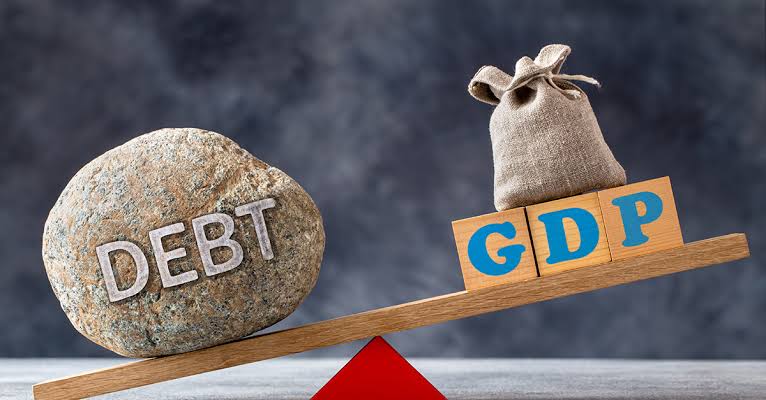According to a recent report by Investopedia, Sierra Leone is ranked 16 among the top 20 countries with the highest debt-to-GDP ration in Africa.
Investopedia defines debt-to-GDP ratio as an important metric used by economists to compare a country’s gross national debt to its gross domestic product. It measures how much a country owes, in comparison to everything the country produces.
The Gross Domestic Product (GDP) comprehensively measures the monetary value of all the products and services that are produced in a country within a given period.
“By comparing what a country owes with what it produces, the debt-to-GDP ratio reliably indicates that particular country’s ability to pay back its debts. Often expressed as a percentage, this ratio can also be interpreted as the number of years needed to pay back debt if GDP is dedicated entirely to debt repayment,” says Investopedia.
In a recent radio discussion, Hon. Abdul Kargbo of the opposition All Peoples Congress (APC) averred that the ruling Sierra Leone Peoples Party (SLPP) had increased the public debt from Le17.83 trillion in 2018 to Le30.71 tril
He added that in 2021 the public debt increased to Le14.3 trillion while in the ten years of the APC regime, the public debt increased by Le15.04 trillion with a difference of less than Le1.1 trillion.
Hon. Kargbo said that if we are to pay the debt incurred by the SLPP, each Sierra Leoneans is to pay $423, making Sierra Leone the most indebted nation in the sub region.
“Our external debt is $2 billion and our domestic debt is $1.1 billion. Our total debt as at 2020 is $3.1 billion,” he said.
He added that, “The West African Monetary Zone had earlier advised that all nations that their public debt should not exceed 65% of their GDP, but Sierra Leone public debt is currently 77% of its GDP.”
A recent report by the World Bank showed that more than half of the world’s low-income countries, most of which are in Africa, are either currently grappling with debt distress or at risk of doing so. This is according to a blog post that was recently published on the World Bank’s website.
That said, below are 20 African countries with the highest debt-to-GDP ratios. This list is courtesy of a report by Statist. Although the exact figures of these countries’ public debts were not disclosed, the percentage of debt to GDP are clearly indicated as you can see below.
1. Eritrea: The national debt in this Horn of Africa country stands at 175.1% of the GDP.
2. Cabo Verde: This island nation has a debt-to-GDP ratio of 160.7%.
3. Mozambique: Mozambique has a debt-to-GDP ratio of 133.6%.
4. Angola: This Southern African country has a debt-to-GDP ratio of 103.7%.
5. Mauritius: This island country’s gross debt stands at 101% of its GDP.
6. Zambia: Zambia’s gross national debt also stands at 101% of its GDP.
7. Republic of Congo: This country in Central Africa has a debt-to-GDP ratio of 85.4%.
8. Ghana: Ghana’s debt to GDP ratio currently stands at 83.5%.
9. The Gambia: In this country, the debt-to-GDP ratio is at 82.3%.
10. Seychelles: This island country has a debt-to-GDP ratio of 81.9%.
11. Guinea-Bissau: This country’s debt-to-GDP ratio currently stands at 79.1%.
12. Rwanda: Rwanda’s debt-to-GDP is at 74.8%.
13. Burundi: The Eastern African country has a debt-to-GDP ratio of 72.4%.
14. Gabon: In Gabon, the debt-to-GDP ratio is 72.1%.
15. Senegal: This Francophone West African country has a debt-to-GDP ratio of 71.9%.
16. Sierra-Leone: The Anglophone West African country has a debt-to-GDP ratio of 71.1%.
17. Namibia: This country has a debt-to-GDP ratio of 69.9%.
18. Kenya: Kenya’s debt-to-GDP ratio is 69.7%.
19. South Africa: This country has a debt-to-GDP ratio of 68.8%.
20. South Sudan: South Sudan has a debt-to-GDP ratio of 64.4%.



 Post a comment
Post a comment 









